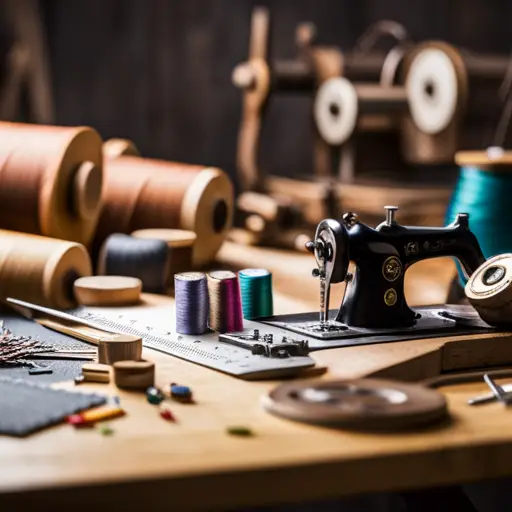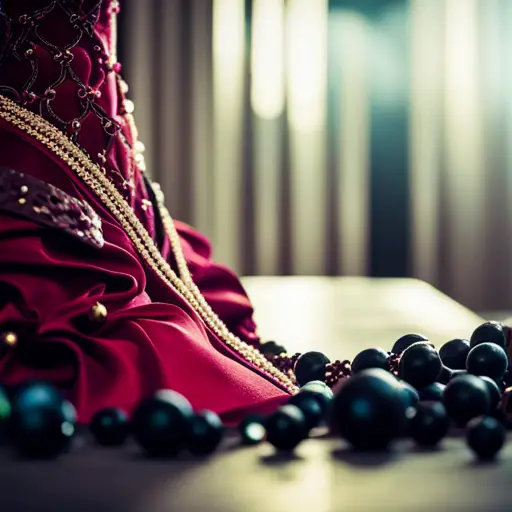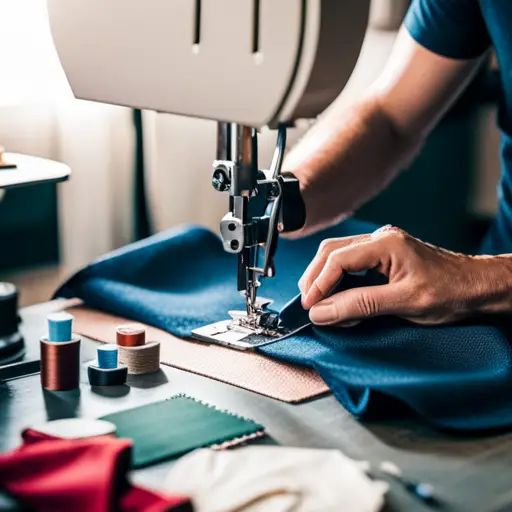Essential Tools Every Costume Maker Needs

Like a painter with a palette or a chef with their knives, a costume maker’s toolkit is essential for bringing their creative visions to life. From intricate stitching to precise measurements, each tool plays a vital role in crafting the perfect costume.
In this article, we will explore the must-have tools every costume maker needs, from sewing essentials to pattern making aids, to ensure that every project is executed with precision and flair.
Sewing Essentials
Costume makers rely on a set of sewing essentials to meticulously craft and assemble the intricate details of their creations. When it comes to sewing machine maintenance, regular cleaning and oiling are crucial to ensure smooth operation and longevity. Understanding different stitching techniques is also essential.
For instance, using a straight stitch for most seams provides durability, while a zigzag stitch is perfect for fabrics that need some stretch, like spandex or Lycra. Mastering the art of backstitching is vital for securing the start and end of a seam, preventing unraveling. Additionally, knowing when to adjust the machine’s tension based on the fabric being used is pivotal for achieving professional-looking results.
Transitioning into cutting and measuring tools, it’s important to have a reliable set of tools for precise fabric cutting and accurate measurements. From fabric shears and rotary cutters to tape measures and rulers, these tools are fundamental for ensuring that the fabric is cut to the correct dimensions and shapes needed for the costume.
Cutting and Measuring Tools
Regularly, costume makers rely on a precise set of cutting and measuring tools to ensure accurate dimensions and shapes for their creations. The right tools are essential for achieving clean and professional-looking costumes. Costume makers employ a variety of cutting techniques, including straight cuts, curves, and intricate patterns, and they need precision measuring to ensure that each piece fits perfectly. Here are some essential cutting and measuring tools every costume maker should have in their arsenal:
| Cutting Tools | Measuring Tools | Other Essentials |
|---|---|---|
| Sharp Fabric Scissors | Flexible Measuring Tape | Seam Ripper |
| Rotary Cutter | Clear Quilting Ruler | Tailor’s Chalk |
| Pinking Shears | Seam Gauge | Cutting Mat |
| Craft Knife | Dressmaker’s Curve | Pattern weights |
These tools not only make the cutting process more efficient but also ensure that the measurements are precise, resulting in well-fitted and visually appealing costumes. Whether working with delicate fabrics or intricate designs, having the right cutting and measuring tools is indispensable for costume makers striving for perfection.
Fabric and Material Manipulation
Fabric and material manipulation techniques are crucial skills for costume makers to master in order to create high-quality and visually striking costumes. By employing various methods of fabric dyeing and texture manipulation, costume makers can elevate their creations to the next level.
Some essential techniques in fabric and material manipulation include:
-
Fabric Dyeing: Understanding the art of fabric dyeing is vital for costume makers to achieve the desired color palette for their costumes. Whether it’s tie-dyeing, dip-dyeing, or ombre effects, mastering fabric dyeing techniques allows for endless creative possibilities in costume design.
-
Texture Manipulation: Experimenting with texture manipulation techniques such as pleating, smocking, or ruching can add depth and dimension to costume designs. These techniques not only enhance the visual appeal of the costume but also contribute to the overall storytelling and character portrayal.
-
Embellishment Techniques: Embellishments like beading, embroidery, and appliqué can be used to enrich the texture and visual interest of costumes, adding intricate details and a touch of opulence to the finished pieces.
Costume Embellishments
An understanding of various embellishment techniques is essential for costume makers to elevate the visual appeal and intricacy of their creations. Incorporating beadwork techniques and embroidery stitches can add depth and texture to costumes, creating a visually stunning effect. Beadwork techniques such as beading, sequinning, and using rhinestones can bring a touch of glamour to costumes, while different embroidery stitches like satin stitch, chain stitch, and French knots can add intricate detail and dimension.
Another essential aspect of costume embellishments is the use of applique methods and trim selection. Applique methods, including satin stitch applique, raw edge applique, and reverse applique, allow costume makers to add decorative fabric pieces to the base fabric, creating unique and eye-catching designs. Additionally, selecting the right trim, such as lace, ribbons, or braids, can further enhance the overall aesthetics of the costume.
To provide a clear overview of these techniques, refer to the table below:
| Embellishment Techniques | Examples |
|---|---|
| Beadwork Techniques | Beading, Sequinning, Rhinestones |
| Embroidery Stitches | Satin Stitch, Chain Stitch, French Knots |
| Applique Methods | Satin Stitch Applique, Raw Edge Applique, Reverse Applique |
| Trim Selection | Lace, Ribbons, Braids |
Pattern Making and Design Aids
In addition to mastering embellishment techniques, costume makers need to incorporate pattern making and design aids to ensure precision and accuracy in their creations. Utilizing pattern drafting tools and design software can streamline the costume making process and elevate the quality of the final product.
Here are essential pattern making and design aids every costume maker should consider:
-
Pattern Drafting Tools: Traditional tools such as rulers, French curves, and pattern notches facilitate the creation of precise and well-proportioned patterns. These tools are indispensable for transforming design concepts into tangible patterns that serve as the foundation for the final costume.
-
Design Software: Cutting-edge design software such as Adobe Illustrator and AutoCAD enable costume makers to digitize the pattern making process, allowing for increased efficiency and flexibility in design iteration. These tools empower costume makers to experiment with various design elements and make intricate adjustments with ease, ultimately leading to a more polished end result.
Frequently Asked Questions
How Can I Properly Store and Organize My Fabric and Material Supplies to Prevent Damage and Keep Them Easily Accessible?
Proper storage and organization of fabric and material supplies are crucial to prevent damage and ensure accessibility. Utilize clear bins, shelves, and labeling systems. Consider climate control and avoid direct sunlight to maintain quality.
Are There Any Specialized Tools or Techniques for Creating Intricate Costume Embellishments, Such as Beading or Embroidery?
When creating intricate costume embellishments, costume makers can employ specialized techniques and tools to achieve stunning results. Beading techniques and embroidery tools are essential for adding intricate details and textures to costumes, showcasing craftsmanship and creativity.
What Are Some Tips for Effectively Using Pattern Making and Design Aids, Especially for Creating Custom-Fit Costumes?
Embracing technology in pattern making and design aids enhances custom fitting for intricate costumes. Streamlining costume complexity, these tools offer precision and efficiency. Integrating digital resources into traditional methods elevates the craft, resulting in unparalleled artistry.
How Can I Ensure That I Am Selecting the Right Type of Fabric and Material for the Specific Costume I Am Making?
Selecting the right fabric is crucial for costume making. Consider the costume’s design, durability, and comfort. Organize materials by type and purpose to streamline the production process. A systematic approach ensures efficient and effective material selection.
Are There Any Alternative Cutting and Measuring Tools That Can Be Used for Costume Making, Especially for Those on a Budget or With Limited Space?
When it comes to costume making, alternative cutting and measuring tools are essential, especially for those on a budget or with limited space. Exploring budget-friendly options and space-saving solutions can greatly enhance the efficiency of the costume making process.
Conclusion
In conclusion, one must acquire the necessary tools for costume making in order to achieve success in this craft. Without these essential items, the process of creating costumes would be much more challenging and the end result may not meet one’s expectations.
It is crucial to invest in quality sewing essentials, cutting and measuring tools, fabric manipulation materials, costume embellishments, and pattern making aids in order to bring one’s vision to life.




